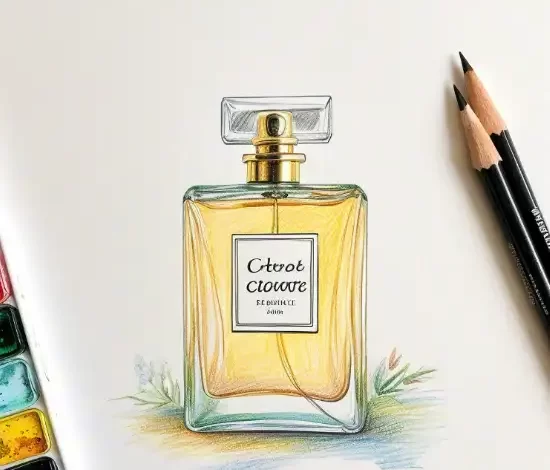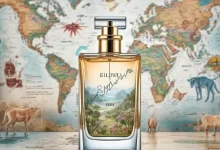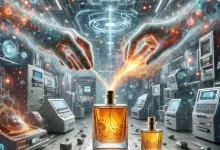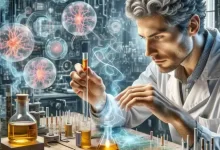Olfactory Cartography Techniques: Decoding the Science Behind Scent Geography
Advanced Methodologies Perfumers Use to Translate Physical Spaces into Fragrant Narratives

Abstract:
Uncover the sophisticated scientific and artistic methodologies underpinning Scent Geography. This exploration reveals how perfumers employ headspace technology, cultural anthropology, and molecular analysis to transform tangible environments into wearable olfactory experiences. Learn about groundbreaking techniques capturing everything from Arctic glaciers to Amazonian canopies, and how synthetic chemistry expands the boundaries of place-based perfumery.
Body Content:
The art of Scent Geography represents a paradigm shift in perfumery, moving beyond abstract compositions to intentional spatial storytelling. This sophisticated practice requires a unique fusion of scientific rigor and artistic intuition, transforming perfumers into sensory archaeologists and spatial translators. Unlike conventional fragrance creation, olfactory cartography demands systematic deconstruction of environments through multidisciplinary lenses before reconstructing their essence in liquid form.
The Scientific Framework of Olfactory Mapping
-
Headspace Technology & Environmental Capture:
The cornerstone of modern Scent Geography involves headspace analysis – a process where specialized equipment captures volatile organic compounds (VOCs) directly from environments. Perfumers deploy:- Field Chromatographs: Portable GC-MS devices analyze air samples in real-time within rainforests, urban centers, or coastal regions
- Polymer Traps: Absorbent materials collect scent molecules from specific surfaces (ancient wood, volcanic rock, desert sands)
- Dynamic Olfactometry: Trained panels quantify odor intensity and character at source locations
Case Study: Capturing Antarctic Ice Melt
Researchers recently isolated 47 distinct VOCs released during glacial calving – including dimethyl sulfide (ozonic), geosmin (petrichor), and novel cryogenic esters – enabling perfumers to recreate the scent of disappearing icebergs.
-
Molecular Terroir Profiling:
Beyond simple botanical sourcing, advanced spectrometry reveals how geography alters molecular structures:- Isotope Ratio Mass Spectrometry (IRMS): Differentiates Grasse jasmine (higher linalool content) from Indian varieties through soil mineral signatures
- HPLC-DAD Analysis: Identifies region-specific flavonoid patterns in lavender essential oils
- Chiral Separation: Detects left/right-handed molecule ratios unique to specific microclimates
This molecular fingerprinting allows perfumers to authenticate origin and reconstruct hyper-localized accords impossible through traditional sourcing.
-
Cultural Olfactology Research:
Ethnographic methods decode scent-culture relationships:- Scent Diaries: Communities document olfactory experiences during rituals, seasons, or daily routines
- Historical Olfactory Reconstruction: Analyzing residue in ancient vessels or textiles to recreate lost scents
- Urban Smellwalking: Systematic documentation of city odor zones and temporal variations
Example: Kyoto’s Kōdō Ceremonies
Perfumers collaborated with incense masters to map the spiritual geography of temple fragrances, translating centuries-old blending techniques into contemporary accords representing Zen gardens’ spatial philosophy.
The Alchemy of Translation: From Data to Fragrance
-
Synthetic Replication vs. Artistic Interpretation:
- Precision Reconstruction: Using captive molecules like Florhydral® to replicate exact flower species from inaccessible ecosystems
- Emotive Abstraction: Creating “olfactory illusions” – e.g., using Calone and oyster leaf extract to suggest tidal movements without literal marine notes
- Temporal Layering: Capturing how places smell at different times (dawn markets vs. midnight alleys) through evolving note structures
-
Structural Architecture of Place-Based Fragrances:
Perfumers design spatial dimensions within compositions:| Dimension | Olfactory Equivalent | Example Materials | |---------------|-------------------------------|-----------------------------------| | Altitude | Density/Vapor Diffusion | Ozonic molecules, light aldehydes | | Texture | Tactile-Tonal Relationships | Silicones (stone), furanones (velvet) | | Humidity | Molecular Mobility | Hygroscopic bases, steam accords | | Light Quality | Refractive Olfaction | Citrus aldehydes, transparent musks | -
Challenges in Environmental Translation:
- Ephemerality: Capturing transient phenomena like monsoon rains or forest fires requires stabilization of unstable compounds
- Olfactory Pollution: Filtering anthropogenic elements (exhaust fumes, industrial emissions) while preserving cultural authenticity
- Ethical Terroir: Navigating biopiracy concerns when sourcing rare endemic materials
Revolutionary Case Studies in Modern Scent Geography
Project Borealis: Arctic Soundscapes to Scent
A multidisciplinary team converted hydrophone recordings of glacial movements into olfactory frequencies. Subsonic vibrations were translated as bass-note ambers, while high-frequency ice cracks became shards of minty-camphoraceous notes, creating an immersive Arctic olfactory symphony.
Neo-Metropolis Series: Shanghai 2045
Using predictive algorithms and urban planning data, perfumers constructed a futuristic cityscape fragrance:
- Top: Ozone-charged aldehydes + photovoltaic panel accord
- Heart: Genetically-modified tea hybrids + nano-carbon tubes
- Base: Aquatic concrete + data-stream musks
This speculative scent geography anticipates evolving urban odor identities.
The Vanishing Coastlines Project
Coastal geologists and perfumers collaborated to capture eroding shorelines:
- Salt-crusted driftwood (GC-MS analyzed)
- Endangered dune flora headspace
- Chromatographic “fingerprints” of disappearing microbial communities
Each fragrance bottle contains GPS coordinates of its source location, creating olfactory memorials for threatened ecosystems.
Technical Innovations Expanding the Field
-
Digital Olfaction Interfaces:
- eNoses that convert environmental data into formula suggestions
- VR scent modules providing real-time olfactory feedback during composition
- Blockchain verification for terroir authenticity
-
Biomimetic Molecular Engineering:
Creating novel aroma molecules that mimic:- Photosynthesis scent signatures
- Geological weathering processes
- Atmospheric particle interactions
-
Scent Diffusion Mapping:
Using computational fluid dynamics to design fragrances that unfold in physical space, replicating how scents travel through specific environments (e.g., canyon winds vs. humid forests)
The Philosophical Dimensions
Scent Geography raises profound questions:
- Can a place’s “soul” be bottled without exploitation?
- Who owns the olfactory identity of a landscape?
- Do reconstructed scents preserve or distort cultural memory?
Leading practitioners adopt ethical frameworks prioritizing community collaboration and ecological reciprocity.
Future Horizons: Where Olfactory Cartography is Headed
- Personalized Geoscentry:
DNA-based fragrances matching individual ancestry to ancestral landscapes - Climate Olfactives:
Wearable scent documents tracking environmental changes - 4D Olfactory Installations:
Site-specific scent sculptures reacting to real-time weather data - Exoplanetary Scent Probes:
Theoretical fragrances based on spectroscopic analysis of distant atmospheres







